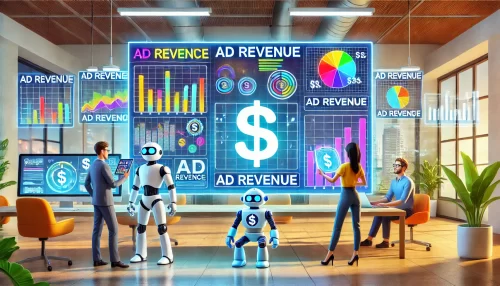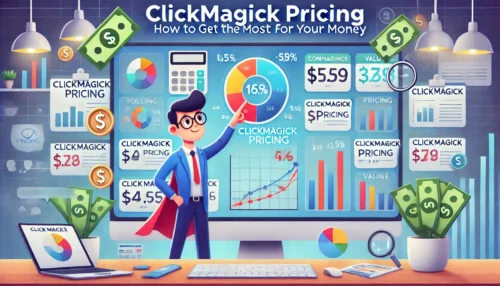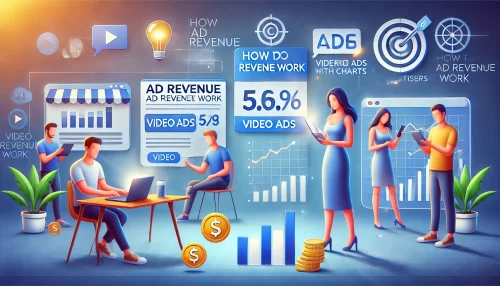Table of Contents
Performance based marketing! As the digital landscape continues to evolve, businesses are incessantly seeking effective strategies to maximize their return on investment in advertising.
One such approach, heralding a paradigm shift in the way companies advertise, is Performance Based Marketing. The key elements of this introduction will focus on defining this powerful approach and discussing its relevance in today’s competitive business environment.
Defining Performance Based Marketing
Performance Based Marketing, also known as result-based or outcome-based marketing, is a digital marketing strategy where the advertiser only pays for specific, measurable results.
These results might be clicks (Pay-Per-Click), impressions (Cost-Per-Impression), sales (Cost-Per-Sale), or a set number of form fills or leads (Cost-Per-Lead). This marketing strategy pivots on the principal of ‘you get what you pay for.’
In other words, Performance Based Marketing aligns the goals of advertisers and publishers more precisely by tying advertising costs directly to the outcomes. It deploys a performance metric system, providing an avenue for advertisers to measure their success based on tangible results, be it increased brand awareness, lead generation, or conversions.
Thus, Performance Based Marketing takes the risk out of the advertising equation, ensuring businesses only pay when their specific goals are achieved.
The Relevance of Performance Based Marketing in Today’s Business Environment
In today’s business environment, where every dollar spent on advertising needs to count, Performance Based Marketing is becoming more relevant than ever. Traditional advertising strategies, often seen as a gamble, involve paying upfront without any guaranteed results. In contrast, Performance Based Marketing offers a safety net, allowing businesses to invest their money more wisely and ensuring they only pay for results.
Moreover, with the rise of data analytics and tracking technology, businesses can now measure their marketing performance in real-time. This ability to track and measure outcomes enables them to fine-tune their marketing strategies quickly and efficiently, thereby optimizing their advertising spend. This trend has made Performance Based Marketing not only desirable but necessary in the current competitive landscape.
Further, Performance Based Marketing is extremely flexible and adaptable. Whether it’s a small business looking to generate leads or a multinational corporation aiming to boost brand awareness, this approach can be tailored to meet diverse business goals and budgets.
Understanding the Basics of Performance Based Marketing
As we delve into the heart of performance based marketing, it’s crucial to grasp its basic elements and the key principles that drive its success. Moreover, contrasting it with traditional marketing strategies will shed light on its distinctive advantages.
The Key Principles of Performance Based Marketing
Performance based marketing operates on three key principles: transparency, accountability, and ROI-driven strategy.
Firstly, transparency is the cornerstone of performance based marketing. It enables businesses to see where their budget is being spent and what results are being achieved. This open-book approach ensures that there are no hidden costs or unaccountable expenditures.
Secondly, performance based marketing brings accountability into the advertising equation. Businesses pay for measurable results such as clicks, conversions, or leads. As such, both the advertiser and publisher are held accountable – the advertiser for creating compelling ads, and the publisher for placing them effectively to achieve the desired results.
Finally, performance based marketing is ROI-driven. It’s all about maximizing return on investment. Advertisers only spend money when they achieve their defined outcomes, which makes it a financially sound marketing strategy. This focus on ROI puts a premium on efficiency and productivity, ensuring every dollar spent works harder to achieve the desired results.
Performance Based Marketing vs. Traditional Marketing Strategies
Comparing performance based marketing with traditional marketing strategies highlights some key contrasts. Traditional marketing strategies, such as print, TV, or radio advertising, often require substantial upfront costs with no guaranteed results.
They focus more on reaching a broad audience rather than targeting specific demographics, which can lead to inefficiencies in budget allocation. Furthermore, their impact is challenging to measure accurately, making it hard to calculate ROI.
On the other hand, performance based marketing is all about measurable results and targeted marketing. It’s more cost-effective as advertisers only pay when a specific action is completed, which might be a click, a lead, or a sale. This precision targeting means businesses can focus their ads on audiences that are more likely to convert, leading to better use of marketing funds.
Moreover, due to its digital nature, performance based marketing leverages advanced analytics and tracking technology, providing businesses with real-time performance data. This real-time feedback allows marketers to adjust campaigns promptly, ensuring optimal use of resources and improved ROI.
The Benefits of Performance Based Marketing
The allure of performance based marketing comes from its multitude of benefits, enabling businesses to operate more efficiently, transparently, and profitably. We’ll explore these advantages, focusing on cost-effectiveness, transparency, accountability, and business performance optimization.
Cost-Effectiveness of Performance Based Marketing
One of the principal benefits of performance based marketing is its cost-effectiveness. In a traditional marketing setup, businesses spend money upfront on advertising without any assurance of returns.
However, performance based marketing flips this model by requiring payment only when specific, agreed-upon actions are taken—be it a click, lead, or a sale. This means companies only pay for what works, ensuring that marketing budgets are not squandered on ineffective campaigns.
This approach allows businesses, especially smaller ones with tighter budgets, to compete on a more level playing field. Since advertisers only pay for results, they can focus their resources on strategies that yield the best return on investment (ROI). As a result, performance based marketing ensures a more efficient allocation of advertising budgets, driving greater value for every dollar spent.
Transparency and Accountability in Performance Based Marketing
In the realm of performance based marketing, transparency and accountability go hand in hand. Both the advertiser and publisher are held accountable for their roles—publishers need to ensure the ad reaches the right audience, and advertisers need to create compelling ads that encourage users to take action.
Transparency is integral to this relationship. Businesses can track and monitor their campaigns in real-time, witnessing firsthand where their ad spend is going and what it’s achieving. This clarity allows for continual optimization of campaigns based on what is working and what isn’t. Therefore, it’s not just about gaining insight into your marketing spend but also being able to swiftly react and adapt to market changes.
Optimizing Business Performance with Performance Based Marketing
Performance based marketing serves as a powerful tool to optimize business performance. By tying advertising costs directly to outcomes, businesses can better align their marketing strategies with their overall goals, whether that’s boosting brand awareness, driving sales, or generating leads.
With access to real-time data analytics, businesses can continuously refine their campaigns based on performance, ensuring their marketing efforts are always optimized. It enables them to identify successful strategies and those that need improvement, allowing for quick adjustments to enhance performance.
Moreover, it’s not just about enhancing marketing performance. By connecting marketing activities directly to business outcomes, performance based marketing can inform broader business strategies. For instance, insights gained from a successful campaign can inform product development, sales strategies, or customer service practices.
Performance Based Marketing Models
Understanding the core performance based marketing models – Pay-Per-Click (PPC), Cost-Per-Impression (CPM), Cost-Per-Acquisition (CPA), and Affiliate Marketing – will allow you to identify which strategy best aligns with your business goals and how each can be leveraged to optimize your advertising strategy.
Pay-Per-Click (PPC)
Pay-Per-Click (PPC) is a performance based marketing model where advertisers pay a fee each time their ad is clicked by a user. The goal is to lead the person who clicked on the ad to the advertiser’s website or landing page. PPC is particularly popular with search engine advertising like Google Ads, where you bid for ad placement in a search engine’s sponsored links.
The effectiveness of a PPC campaign rests heavily on the relevance and quality of the advertisement and the linked page. It’s crucial to create compelling, targeted content that will resonate with your audience and prompt them to engage. The key advantage of PPC is that it can offer instant visibility on search engines, making it particularly beneficial for new websites seeking immediate traffic.
Cost-Per-Impression (CPM)
Cost-Per-Impression (CPM), also known as cost per mille, is a performance based marketing model in which the advertiser pays for every thousand impressions (views) their ad receives. This model is commonly used in display advertising and is more about building brand awareness than driving immediate conversions.
While CPM campaigns might not yield immediate tangible results like a click or a sale, they are essential for establishing a strong brand presence online. By reaching a larger audience, businesses can increase their brand recognition and stay top-of-mind among potential customers. This can indirectly drive future conversions and improve overall business performance.
Cost-Per-Acquisition (CPA)
Cost-Per-Acquisition (CPA), also known as Cost-Per-Action, is a performance based marketing model where the advertiser only pays when a specified acquisition – such as a sale, signup, or form submission – is completed. In other words, you only pay when your ad accomplishes its intended goal.
CPA is considered one of the most cost-effective models, especially for businesses looking to drive concrete conversions. Since you only pay when a customer takes a desired action, it ensures that your marketing spend directly contributes to your business goals. However, it also requires a higher level of commitment from the customer compared to PPC or CPM, so a compelling offer and a high-converting landing page are essential.
Affiliate Marketing
Affiliate marketing is a performance based marketing model where a business rewards one or more affiliates for each visitor or customer brought by the affiliate’s marketing efforts. Essentially, it’s a way of outsourcing your marketing to third parties, only paying them when they deliver results.
Affiliate marketing can expand your reach exponentially as each affiliate has their audience, potentially introducing your brand to customers who might not have found you otherwise. However, successful affiliate marketing relies on strong relationships with trustworthy affiliates who align with your brand values and can authentically promote your products or services to their audience.
Implementing Performance Based Marketing Strategy
Successfully implementing a performance based marketing strategy requires a clear set of goals, the right choice of marketing channels, and continuous monitoring and measuring of your campaigns. Let’s delve into each of these critical components.
Setting Up Your Goals
The first step in implementing a performance based marketing strategy is to clearly define your goals. What do you want to achieve with your campaign? Are you looking to increase brand awareness, drive more traffic to your website, generate leads, or increase sales?
The goals you set should be Specific, Measurable, Achievable, Relevant, and Time-bound, often referred to as SMART goals. This approach will help ensure your goals are clear and reachable, providing you with a roadmap to success.
Your goals will also guide the decision on which performance based marketing model to use. If you’re seeking wide brand exposure, a CPM campaign might be suitable. For generating leads or sales, you may consider PPC or CPA. In essence, your goals will shape your strategy, so take the time to get this step right.
Choosing the Right Performance Based Marketing Channels
Once your goals are set, you’ll need to choose the right channels for your performance based marketing campaigns. This choice depends on several factors, including your target audience, the nature of your product or service, and your budget.
If you’re targeting a B2B audience, platforms like LinkedIn might be more effective. For a B2C audience, you might consider Google Ads, Facebook, Instagram, or other social media platforms.
If you’re implementing an affiliate marketing strategy, you’ll need to select affiliates who have an audience that aligns with your target demographic and can authentically promote your brand.
Choosing the right channels will maximize your reach and effectiveness, ensuring your advertising messages connect with the right people at the right time.
Monitoring and Measuring Your Performance Based Marketing Strategy
A crucial component of performance based marketing is continuous monitoring and measurement. Given that you’re paying for specific results, it’s imperative to measure these results accurately.
Use analytics tools to track the performance of your campaigns. This could be through Google Analytics, social media insights, or other tracking software. These tools will provide data about how your ads are performing, such as the number of clicks, impressions, conversions, and the overall ROI of your campaigns.
This data isn’t just for record-keeping; it should inform your strategy. Use the insights to identify what’s working and what’s not, and adjust your campaigns accordingly. This might mean tweaking the ad copy, changing the targeting, or even switching to a different marketing channel.
Overcoming Challenges in Performance Based Marketing
Even though performance based marketing holds numerous advantages, it’s not without its challenges. Understanding these obstacles and knowing how to overcome them can make the difference between a good and great marketing strategy.
Ensuring High-Quality Traffic
One of the primary challenges in performance based marketing is ensuring high-quality traffic. You might be generating clicks or impressions, but are they converting? Are the right people seeing and interacting with your ads?
To overcome this challenge, it’s crucial to refine your targeting strategy. This means understanding who your ideal customer is and using demographic, geographic, and behavioral data to target your ads accordingly. Continually test and optimize your campaigns based on performance data to ensure you’re attracting high-quality, relevant traffic.
Dealing with Ad Fraud
Ad fraud is an unfortunate reality in the digital advertising world. It can take many forms, like click fraud, where bots or individuals repeatedly click on an ad to exhaust the advertiser’s budget. This can be particularly harmful in performance based marketing models like PPC.
There are several ways to combat ad fraud. Employing traffic verification tools can help identify and block fraudulent traffic. Regularly monitoring your ad traffic for any suspicious activity can also allow for early detection and mitigation of ad fraud.
Building Trust in Affiliate Marketing
In affiliate marketing, building and maintaining trust between the business, the affiliates, and the consumers can be challenging. Affiliates are essentially brand ambassadors, and if they fail to promote the product accurately or ethically, it can damage the brand’s reputation.
To address this, it’s important to carefully choose your affiliates. Look for those who align with your brand values and have a genuine connection with their audience. Regular communication and clear agreements about how the product should be promoted can also help in maintaining trust and ensuring a beneficial relationship for all parties involved.
Future of Performance Based Marketing
As the world of digital marketing continues to evolve, so does performance based marketing. It’s important for businesses to stay ahead of the curve and anticipate future trends to stay competitive and maximize their marketing efforts.
The Rise of AI and Machine Learning
Artificial Intelligence (AI) and machine learning are becoming increasingly prevalent in digital marketing, and performance based marketing is no exception. These technologies can analyze large amounts of data, identify patterns, and make predictions much faster and more accurately than humans can.
In the context of performance based marketing, AI and machine learning can help automate and optimize campaigns, improve ad targeting, and predict customer behavior. These advancements will allow businesses to get more value from their marketing budget, reduce manual effort, and enhance their overall marketing strategy.
Greater Emphasis on Data Privacy
As consumers become more aware of their digital privacy, businesses need to be more mindful of how they collect and use customer data. Regulations like the General Data Protection Regulation (GDPR) in Europe and the California Consumer Privacy Act (CCPA) in the US reflect this trend.
In performance based marketing, this means balancing effective targeting with respect for customer privacy. Businesses will need to be transparent about how they use customer data and provide options for customers to control their data.
Increasing Use of Video and Interactive Content
Video and interactive content are becoming increasingly popular in digital marketing. These formats can engage audiences more effectively than static images or text, leading to higher click-through rates and conversions.
For performance based marketers, this presents an opportunity to create more engaging and effective ads. Whether it’s through video ads, interactive landing pages, or immersive VR experiences, businesses that can leverage these trends will have an edge in the competitive digital marketing landscape.






